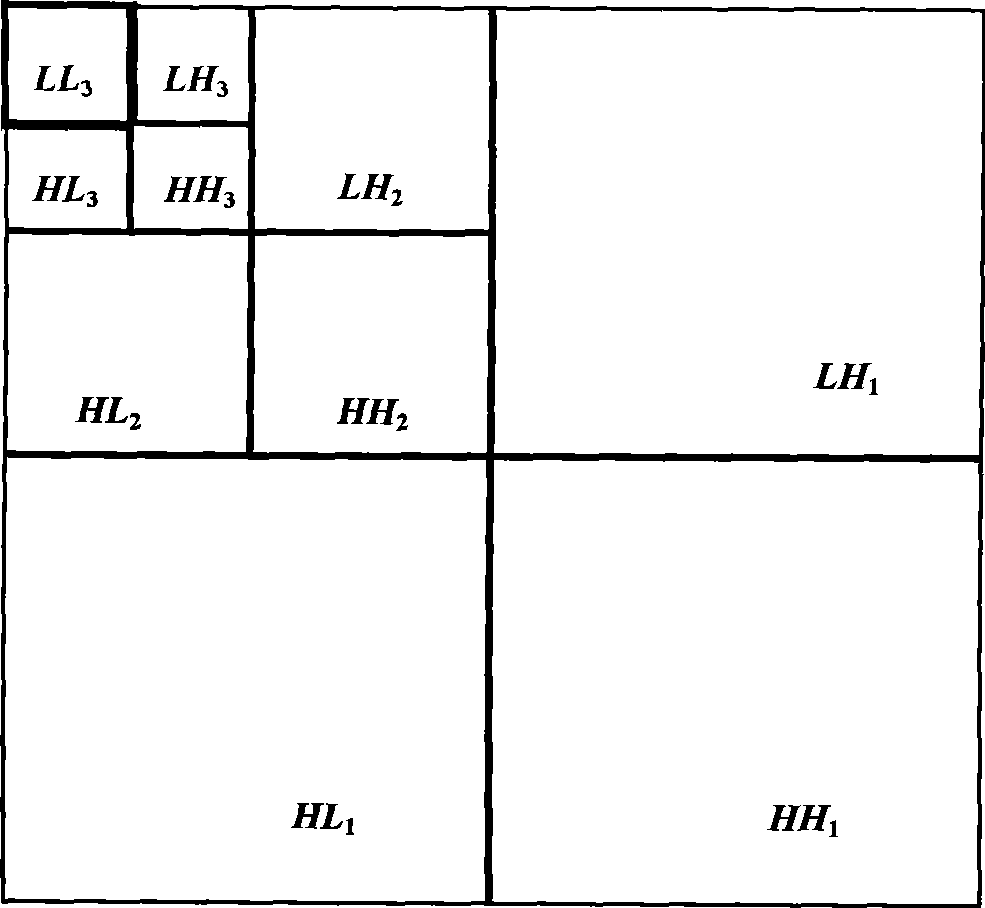Digital watermark imbedding and detecting method and device
A digital watermark and detection device technology, applied in the field of information security, can solve the problems of reducing watermark embedding capacity, watermark extraction quality, inability to resist compression and low-pass filtering, and inability to resist cropping attacks well, so as to increase watermark embedding capacity and avoid The effect of conjugate image mutual interference, concealment and robustness improvement
- Summary
- Abstract
- Description
- Claims
- Application Information
AI Technical Summary
Problems solved by technology
Method used
Image
Examples
example 1
[0134] Example 1: Image quality degradation after embedding a watermark in the carrier image
[0135] The example of the watermark scheme of the present invention adopts the grayscale image baboon (512×512×8) as the original carrier image; any logo image (64×64, binary) as the original watermark image. The embedding weight factor is selected as 0.8, and the watermarked image is obtained after embedding the watermark. At this time, the peak signal-to-noise ratio between the watermarked image and the original carrier image is as high as 43.2dB, the image quality remains intact, and the watermark is invisible visually. The correlation coefficient between the detected watermark image and the original watermark image reaches 1.0.
example 2
[0136] Example 2: Watermarked image detection after lossy compression
[0137] In the network environment, digital images generally need to be compressed before transmission. JPEG compression is a widely used compression method. Therefore, a feasible watermarking scheme must be able to detect correctly after a certain degree of JPEG lossy compression. Practical value.
[0138] The experiment carried out JPEG lossy compression with different ratios on the watermarked image. The results showed that when the compression ratio was as high as 15.20, the peak signal-to-noise ratio between the watermarked image and the original carrier image dropped to 35.3dB, and the detected watermarked image and the original watermarked image The correlation coefficient between them still reaches 0.75, which fully proves that the watermarking scheme has a strong ability to resist lossy compression.
example 3
[0139] Example 3: Watermarked image detection after cropping
[0140] In order to verify the ability of the watermarking system to resist the shearing operation, the experiment was tested for different shearing ratios. The results showed that when cutting 358×358 from the watermarked image (equivalent to 70% of the entire image), the watermarked image and the original carrier image The peak signal-to-noise ratio drops to 7.96dB, and the correlation coefficient between the detected watermark and the original watermark still reaches 0.75.
PUM
 Login to View More
Login to View More Abstract
Description
Claims
Application Information
 Login to View More
Login to View More - R&D
- Intellectual Property
- Life Sciences
- Materials
- Tech Scout
- Unparalleled Data Quality
- Higher Quality Content
- 60% Fewer Hallucinations
Browse by: Latest US Patents, China's latest patents, Technical Efficacy Thesaurus, Application Domain, Technology Topic, Popular Technical Reports.
© 2025 PatSnap. All rights reserved.Legal|Privacy policy|Modern Slavery Act Transparency Statement|Sitemap|About US| Contact US: help@patsnap.com



